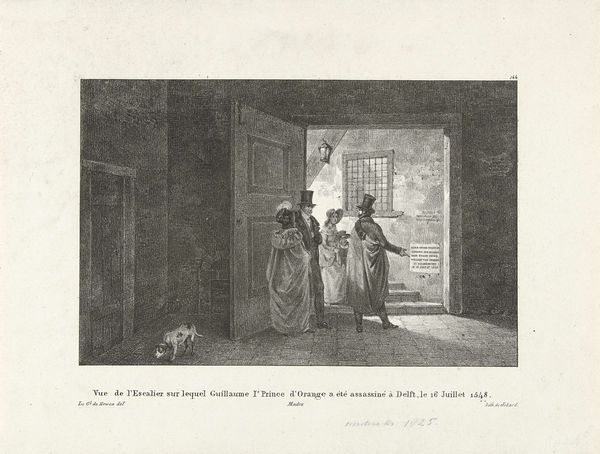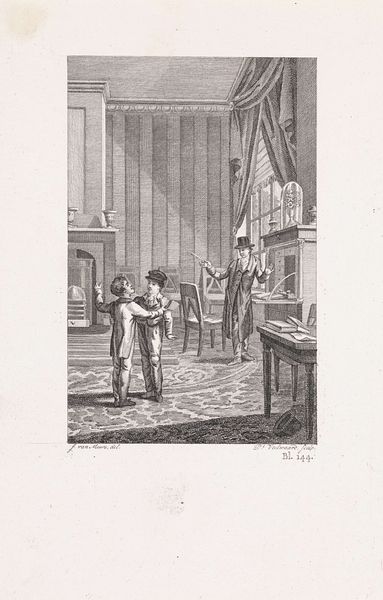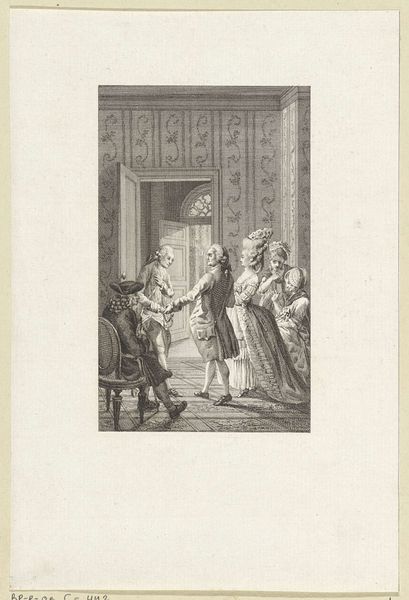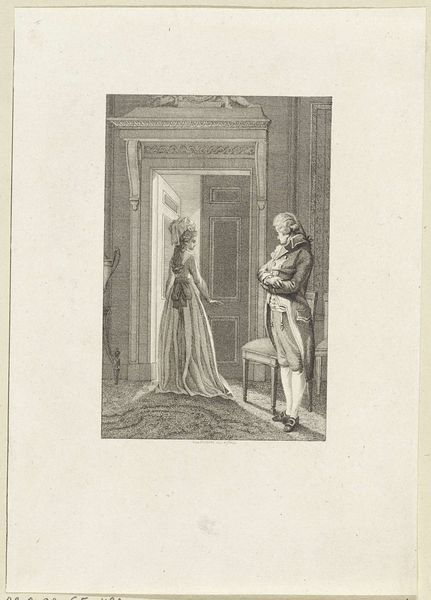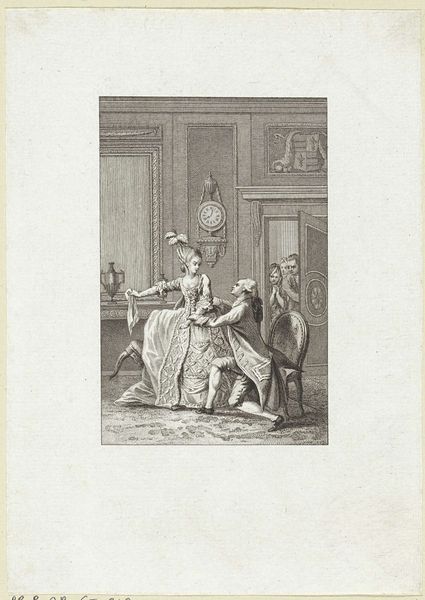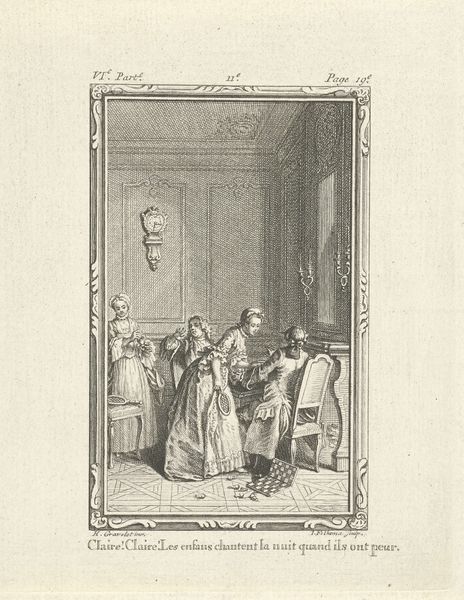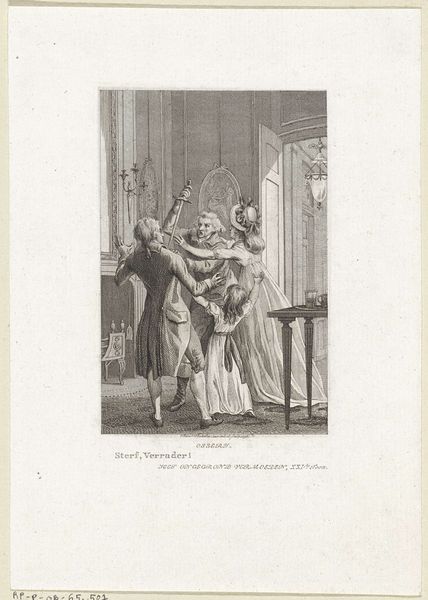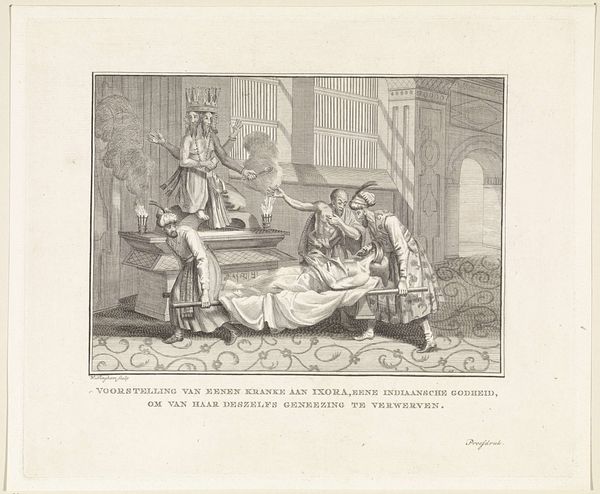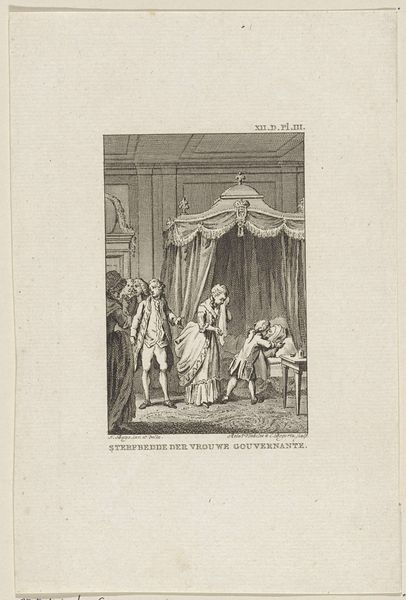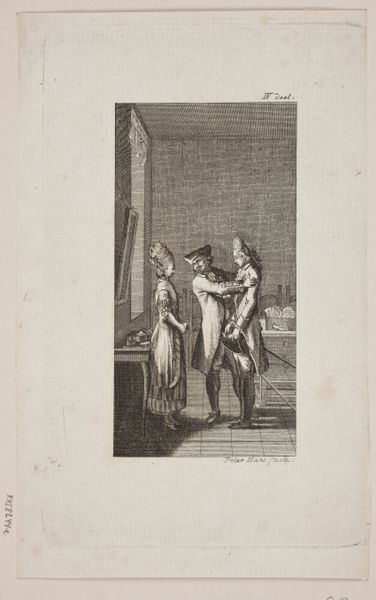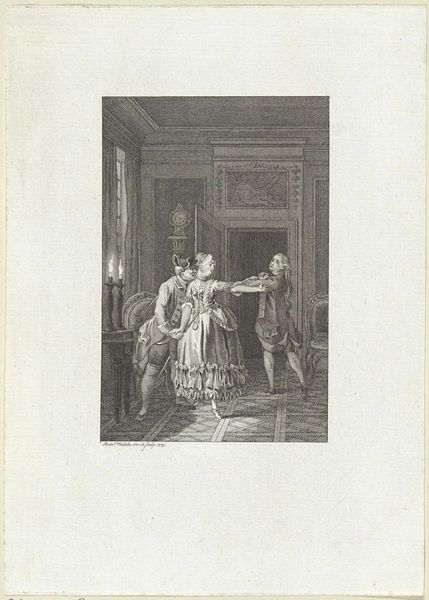
engraving
#
baroque
#
form
#
line
#
genre-painting
#
history-painting
#
academic-art
#
engraving
Dimensions: height 200 mm, width 148 mm
Copyright: Rijks Museum: Open Domain
Curator: Ah, look at this one. It's called "Priester ontdekt lessenaar," which translates to "Priest discovers lectern," created around 1717 by Bernard Picart. It's currently housed at the Rijksmuseum. The artist chose engraving for the medium here. What springs to mind when you first see it? Editor: Well, the immediate feel is theatrical, almost staged. There's a definite sense of unveiling, or perhaps a secret being revealed? It’s stark, monochrome, but not without a strange light about it. It makes me wonder what is so special about this lectern! Curator: I can see that. I think what intrigues me is how Picart uses the form. It's baroque in its detail and line work but also hints at academic precision, doesn't it? This piece walks the line, trying to elevate a simple encounter into something monumental, perhaps commenting on the pomp surrounding knowledge or religion at the time. Editor: It’s the angular geometry of the lectern set against the flowing robes of the priest that arrests my attention. The lectern seems almost like an alien object, which perhaps underscores a discord between intellectual pursuits and the sacred space, even an invasion of knowledge. It reminds me of old alchemical drawings; there's something profoundly symbolic in this juxtaposition. Curator: Interesting! Yes, you're right. Consider also the almost comical expression on the faces of the subjects. Are they shocked, curious, or merely acting? There's something about Picart’s genre-painting style that infuses humor, perhaps even satire, into a scene which on the surface appears quite serious. I wonder if it suggests that such sacred environments might welcome secular knowledge too, hinting at progress and reformation. Editor: Or is it just mocking the grandiosity of these encounters? The title seems so…plain. "Priest discovers lectern"? There is this sense that he may actually never have laid eyes on it before. It’s too staged, like theater set for royalty with roles instead of lived existences. That is quite unsettling actually... to picture them, those figures, as figures and nothing more. Curator: Yes! The 'history-painting' aspect can then be regarded from multiple viewpoints; rather than honoring historical record or grandeur of authority, it exposes fragility—a vulnerability masked behind ceremony. I agree that it strikes deep—inviting both contemplation and amusement simultaneously. Editor: And isn't it a curious dance that the artist lets us witness from the comfortable vantage point of centuries later? Almost voyeuristic yet inviting—a testament surely to the skill in creating a work possessing such magnetic depth! Curator: Absolutely, the skill here invites such interpretation, even after all this time! This brief "discovery" has opened worlds.
Comments
No comments
Be the first to comment and join the conversation on the ultimate creative platform.

